How to Propagate Goldfish Plant
Written by Maggie
Dec 15 2022
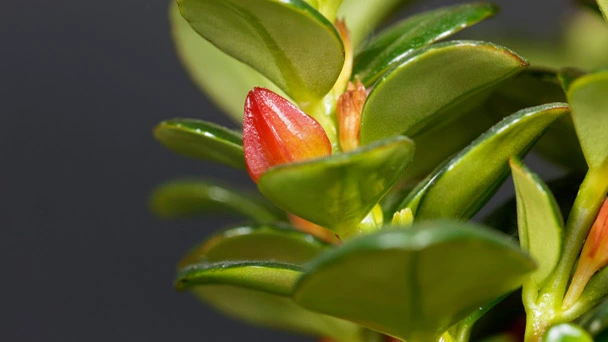
The easiest ways to propagate Goldfish plant are either through stem cuttings or plant division. In general, the best time to propagate your plants is in spring and summer.
Propagating during its growth period gives the cuttings a better chance to root and establish new plants. Growing the Goldfish plant from seeds can be very tricky. The main reason for this is that flowers growing outside their natural habitat are difficult to pollinate. If there's no pollination, the seed will not develop. As a result, finding Goldfish plant seeds for sale is often almost impossible. If you want to grow more of this plant in your home, we recommend propagating it through either stem cuttings or division. Both methods work well for the Goldfish plant, and they're more reliable than growing it from seed.
Goldfish plant stems and leaves are grown very lush, vines hanging down are very natural, blossom the most exuberant, very suitable for growing at home. So if you want to have a few more, how to propagate? Now let's look at the propagation methods of goldfish plants and care after propagation!
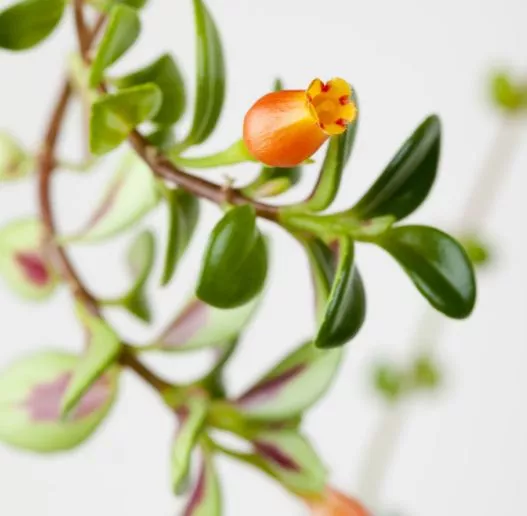
Propagating Goldfish Plants from Seed
Some people say it's easy to propagate goldfish plant seeds. Just put the seeds in the soil, put them in a warm place, keep the humidity, and wait for them to take root, sprout and grow into seedlings. The point is that goldfish plant seeds are hard to collect and can't be grown, let alone propagated.
The seeds and culture medium of Goldfish plant should be disinfected before sowing. Soak goldfish plant seeds in a solution of potassium permanganate at a concentration of about 0.5% for 1-2 hours. You can add appropriate amount of methyl topzin powder in the medium, and stir 2,3 times, so that it is fully mixed with the medium, and then water while stirring, with the medium can be held into a group by hand, and loose and not scattered as best, finally covered with film, about 8-10 hours after placing in the hole plate.
Goldfish plant belongs light-loving plant when germinating. The appropriate germination temperature should be between 20-22℃, and give it the right amount of light, but pay attention to avoid direct sunlight. At the same time to keep the medium and the newspaper wet until the seeds germinate and then open the newspaper. It usually takes 7-15 days to sprout. After germination, Goldfish plant seedlings need to be moved to the temperature of 16-18℃ environment growth.
Goldfish plant seedlings growing 5-7 weeks later, can be directly planted in the 7-8 cm pot. It is a plant with long sunshine, and sunshine time greater than 12 hours is more conducive to flower bud differentiation. For this characteristic, light can be appropriately supplemented to promote its early flowering, but at the same time, attention should be paid to prevent the harm caused by high temperature.
How to Propagate Goldfish Plants With Cuttings?
If it is growing as expected, this plant usually has a short stem. Being leggy indicates that it is unhealthy. Later, branches from the stem spread out in all directions to cover the pottage and flower. As with most other plants, it is therefore unlikely that you will find stem cuttings.
You will need to take cuttings from the branches of the goldfish plant. The supple edges of the still-green components can be used to harvest the necessary cuttings. You could also obtain the cuttings from the branch's middle section. These cuttings must be taken from branches that are either still in active growth or have been preserved from the previous season. Additionally, the component must not have flowers because doing so will cause the cutting to prioritize maintaining the flowers over the roots.
After deciding which branch you want to cut from, proceed to sterilize your scissors or other cutting implement. You risk leaving your plant infected and spreading the infection to the new plant if you don't fix the device.
The ideal cutting size for this propagation should be three to six inches long (7.5 to 15 cm). Detaching the branch section you want to use for propagation 0.5mm above the bottom-most node would be beneficial.
If you cut your cutting from the branch's edge, it is especially likely to have a lot of leaves. When these leaves come in contact with the soil, they are prone to rotting. Rotting leaves may infect the cutting, preventing it from growing.
In order to prevent this from happening, you should remove the leaves from the cutting's lower side. The area that the medium will contact will therefore be visible and simple to reach. It is advised to squirt some rooting hormones into the medium.
Goldfish Plants Propagation from Cutting in Soil
Division propagation is simple but takes a long time to propagate. How can goldfish plants propagate quickly and well? Simple and convenient method that is propagated by cutting. Cutting propagation can be divided into top cuttings and stem cuttings. The principle of the two kinds of propagation is the same, the difference is the location of cutting. Cutting is generally selected in spring and autumn, the choice of top branches or stems cut is also based on the growth and morphology of Goldfish plant, the general selection of annual branches, this branch vitality is strong, cutting survival rate is high.
Cuttings in the spring, for example, choose the right to cut branches, cut 10 centimeters or so commonly, for 3 ~ 4, and insert the prepared plate, spring temperature is just right for growth, as long as keep humidity, sections in about a month time to germinate, then pay attention to heart, which can promote its branch, a basin of new Goldfish propagating good plant.
- Goldfish plant can be propagated from branch cutting and stem cutting, which can be carried out all year round. The best propagation time is in or after flowers indoors.
- Choose one-year robust branches, cut to length of 10-15cm, and cut off all leaves on the bottom, leaving 3-4 leaves on the top of the branches. In addition, in order to improve the survival rate of Goldfish Plant cuttings, they can be soaked with dilute concentration of potassium permanganate solution before planting for 15 minutes.
- River sand or vermiculite culture soil is the best choice for propagating goldfish plant from cuttings. If not, loose and breathable rural soil can also be used.
- Insert cuttings into the matrix, leaving the leaves and a small part of the branches to stay outside the soil, and then water throughly and cover with thin plastic film. Generally keep the temperature at about 20℃, goldfish plant cuttings can germinate in 3-4 weeks. After germination, the cuttings are incubated in the substrate for a period of time. When the growth of cuttings is stable, they can be transplanted.
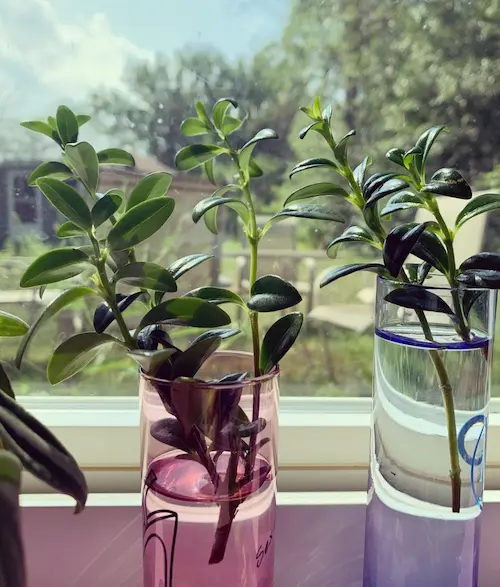
Goldfish plant is one of the plants that can grow in water
Propagate Goldfish Plant Cutting In Water
The Goldfish plant can be propagated in water, but it is different from many hydroponic plants. In general, there is as much water as possible for many hydroponic plants. But goldfish plant not, it can be hydroponic, but water can not exceed a third of the root. If the water is too high, the old root in the water for a long time will rot.Propagating goldfish plant in water is to choose strong branches, wait for it to take root slowly. It generally takes root in 20-30 days. If the hydroponics cutting branches are strong, the root growing speed will be accelerated to a certain extent; If weak branches are used, they will grow slowly. In addition, proper pruning before propagation in water is also critical, and should wait for cuts at the bottom of branches to dry before hydroponics. If you cut it and propagate it in water immediately, it will be difficult to grow roots.
- Change Water: Ensure that the water quality is clean enough, usually need to change water for goldfish plant in time. In the spring and autumn about half a month to change the water, when the temperature rises it can be changed for 10 days, when the winter temperature drops, it can be changed for 20 days.
- Spray Water: When caring, spraying more water to its leaves can make the goldfish plant leaves more smooth breathing and wash away some accumulated dust, conducive to photosynthesis, which will grow faster.
- Nutrient Solution: It is best not to use nutrient solution before the root system has developed. It is best to use nutrient solution until the roots have adapted to the new environment. Applying nutrients to the goldfish plant during its growth will make it grow faster.
Is It Better to Root in Water Or Soil?
Since both approaches can be effective, there is no clear-cut solution to this dilemma.
Although growing goldfish plants in water may increase their chances of success, it can also cause problems later on, such as root rot.
It takes a little more effort to root goldfish plants in soil, but the plant will grow healthier as a result. Additionally, it is best to divide goldfish plants in soil when propagating them this way.
How to Propagate Goldfish Plants from Division
We can't collect Goldfish plant seeds, so we buy a pot of them, and we divide them, and we multiply them from one plant to two or three or more. That's fine, but it takes a year or two for one plant to become two or three, and even longer if we want to grow more. Because of the sudden growth and environment of new plants after division, Goldfish plants need a certain time to root recovery, and only after the old plant is stable can new buds and new branches grow again.
The best time to carry out goldfish plant propagation from the division is when you’re also repotting your Goldfish plant.
- Gently remove the plant from the soil, taking care not to damage the roots.
- Wipe as much soil from the roots as you can.
- Using your hands, gently pull the stems and roots apart to divide the main plant. Depending on how big your Goldfish plant is, you can divide it into 2 or 3 bunches.
- Pot each divided plant in a 6 inch (15 cm) container filled with loose, well-draining soil.
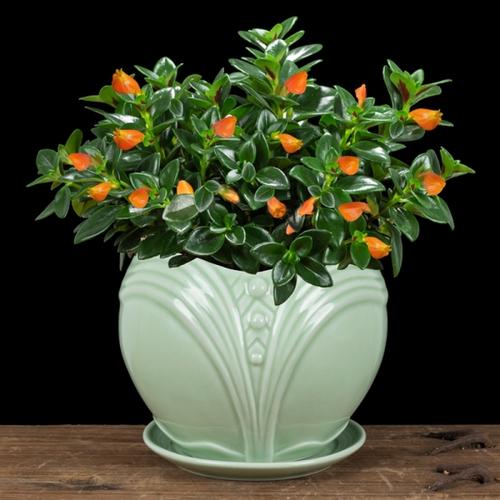
How Long Does It Take to Propagate a Goldfish Plant?
They typically take four to six weeks to take root and establish themselves.
Within a few months of being moved into a bigger container or garden bed, they ought to start to bloom.
Recall that these plants prefer warm climates with temperatures between 60 and 85 degrees Fahrenheit.
You can grow your plant indoors next to a window that gets plenty of sunlight if you live in a colder climate.
Just make sure to keep it away from direct sunlight because that can burn the leaves.
In warmer climates, goldfish plants can also be grown outside.
Just be certain to put them somewhere that gets a lot of afternoon shade.
By doing these things, you'll make sure your plant stays healthy and blossoms quickly.
Care After Goldfish Plant Propagation
With the Goldfish plant propagation method learned, will we soon have a few or more pots? Not necessarily. Why do you say that? With seedlings, it depends on whether we can raise them. How to maintain them to grow well. How to grow well and how to propagate quickly, so we also need to learn goldfish plants care.
1. Choose the appropriate pot and pot soil
Goldfish plant is a vertical ornamental plant. When choosing a flowerpot, try to choose a flowerpot with a beautiful appearance and a slightly higher body to avoid the unstable center of gravity and easy tilt. The basin soil should be fluffy, breathable, permeable, and partial acid soil. It is best to lay some stones or larger particles in the basin floor, so that it can be both heat preservation and good drainage and breathable.
2. Potted
When applying cutting propagation of Goldfish plants, we should pay attention that cutting location selection is very important, that is, the location of the pot, because the cutting after the new branches will take root and germinate, through the heart to make its branches, falling down. After the pot will not move again, and when the pot is planted, but also consider the late branches long hanging down the degree. (Find more best indoor hanging plants here.)
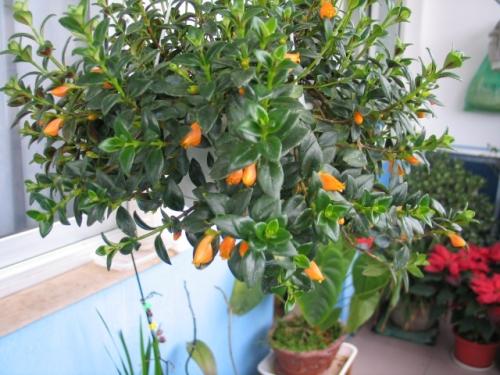
3. Watering and fertilizing
Goldfish plants are hygrophilous plant things, demand for water, spring, summer, autumn, relatively warm and dry season, and need more water, especially in the summer, hot weather, moisture evaporates quickly, and it is best to place it in a shallow pan and in the shade. Also in the surrounding water, keep wet, so as to avoid it because the drying temperature is too high and causes branches and leaves to fall off.
Fertilization is generally chosen in the growing season of Goldfish plants, which requires more nutrients. At this time, it is good to absorb fertilizer and grow fast, but it can not be applied with concentrated fertilizer. Generally, it can be applied with thin fertilizer once a half month. It is OK to apply phosphorus fertilizer again before flowering. After fertilizing, we should loosen the soil to water generally. Read more about Goldfish plant care.
The Ideal Rooting Environment
After completing the aforementioned steps, you must place the cutting in an environment that will aid in rooting. If you make a mistake, your seed cutting might end up dying rather than growing.
Moisture
To keep the cutting alive, a lot of moisture is required. The roots of the goldfish plant help the plant receive some water even though their primary function is anchorage. The roots and leaves work together to ensure that the plant gets enough moisture.
Your plant completely relies on its leaves for moisture when it is a cutting; as a result, it can quickly become dehydrated if the humidity level in the area is insufficient.
By covering the cuts with a plastic bag, you can slow the rate of transpiration. Your plant will stay moist with this dual strategy. You should also mist the cutting every day to replace any moisture it may have lost the day before due to transpiration.
Light
Bright light, but not direct sunlight, is best for this plant's growth. Allow it to receive ample daylight during the day! Remember that the majority of its feeding and energy production takes place on the leaves.
This plant needs to be in the morning for up to thirteen hours each day once it takes root to emphasize how crucial light is to it. In order to give the cutting's leaves enough time to produce energy for germination, you should keep it in indirect light for an equal amount of time.
If you are keeping it outside, make sure that it is shielded from the sun's rays by a tree canopy or a piece of fabric. The plant will experience less transpiration if it is shielded from the sun's direct rays. Place the plant next to an eastern window if you plan to root it inside the home so that sunlight can enter without directly striking the young plant.
Even after the initial propagation, grow lights are crucial for the development of the goldfish plant. Keep in mind that for the plant to bloom properly, it requires thirteen hours of sunlight. Not always can one find this degree of natural illumination. Often, grow lights will be necessary as a sun supplement. During this spreading process, keep them in place.
FAQs of Goldfish Plants Propagation
When Do Goldfish Plants Bloom?
In general, it takes 6 to 10 weeks from seedling to flowering before something blooms between spring and summer. Cuttings that are propagated in the spring or summer will start blooming the following year.
Is a Goldfish Plant the Same as a Lipstick Plant?
Lipstick plants, however, are a different species and genus.
Goldfish plants belong to the Columnea genus (or the Nematanthus genus) of plants and are generally smaller with a vining, trailing habit compared with lipstick plants (Aeschynanthus spp.) which have a larger, branching form.
Hence the name, the latter also has tubular, red blooms.
Is a Goldfish Plant a Sun Or Shade?
Nematanthus gregarius, a type of tropical evergreen, produces tiny bell-shaped flowers.
Although they are native to Brazil, Americans frequently grow them as indoor plants.
They can stand a range of lighting conditions, from direct sunlight to some shade. When grown in bright light, they do, however, flower the best.
Give your plant plenty of light if you want it to produce a lot of flowers.
However, you can grow the goldfish plant in lower light levels if you're more concerned with the growth of the foliage.
How Fast Do Goldfish Plants Grow?
Once they are established, the vines can expand by over a foot annually, usually maturing to a length of 3 feet in just 5 years.
How Much Sun Does a Goldfish Plant Need?
To thrive indoors, these plants require at least 8 hours of bright, indirect sunlight. It should be kept in a window that faces east or west or, for added security, should be placed in a south-facing window with sheer curtains.
Why is My Goldfish Plant Droopy?
Often, drooping indicates that one is overheated or is drinking either too little or too much water. Also causing leaves to droop is cold-water shock.
Water with room temperature only when the top inch of the soil feels dry, and water less frequently in the fall and winter.
Should I Trim My Goldfish Plant?
To direct energy toward new, healthy growth, it is advised to trim back the vines once a year during the spring and summer.
For a neater, fuller appearance, pinch the stem tips and spent blooms with your forefinger and thumb.
Final Thought
The goldfish plant is perceived by some as being picky during all stages of development. But if you think about it, there are actually quite a few care requirements. The best plant imaginable will grow if humidity and temperature are maintained at the ideal levels.
Latest Updated
- Benefits of Bugleweed - 7 Science-backed Health Benefits
- Bugleweed Dangers & Side Effects - Is It Poisonous?
- How to Plant Evergreen Trees - What You Should Know
- When to Plant Evergreens - Grow Guide for Evergreen Trees
- 12 Wonderful Evergreen Shrubs for Your Garden
- 12 Popular Evergreen Plants with Pictures for Beginners
- When And How To Prune A Lilac Bush Like a Pro
- How to Grow & Care for Lilac Vine (Hardenbergia Violacea)
- Japanese Lilac Tree (Syringa Reticulata) Care & Propagation Guide
- Shumard Oak Pros and Cons - What to Know
Popular Articles
- Winter maintenance of Antirrhinum Majus
- How to Grow Terminalia Mantaly Tree
- How to Grow and Care for Crossostephium Chinense
- How to grow Antirrhinum Majus in spring
- Peristeria Elata (Dove Orchid) Profile: Info & Care Guide
- Underwatered Snake Plant (Sansevieria Trifasciata) - Signs And How To Fix
- How to Care for Brazilian Jasmine Plant (Mandevilla Sanderi)
- How to Grow & Care for Graptopetalum Purple Delight in Summer
- Rosa Chinensis (China Rose): Plant Growing & Care Tips
- How to Care for Baby Sun Rose (Aptenia Cordifolia)